Winter Roof Leaks – Causes and Solutions
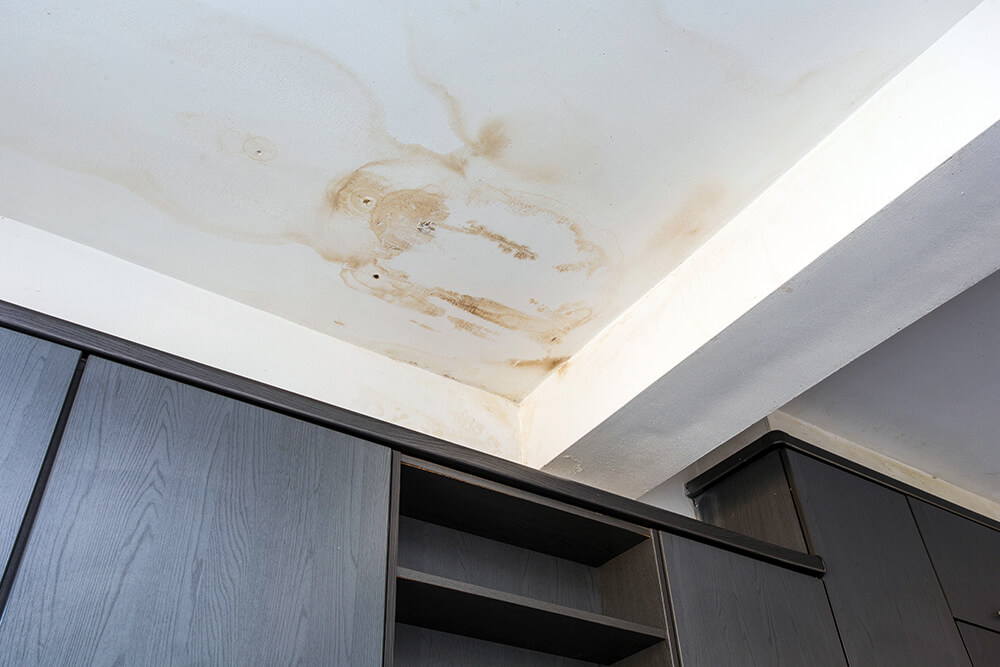
If you have a leaky roof winter may not seem like the optimal time for repair. On the other hand, waiting for warmer weather can make the existing roof leak that much worse. The good news is that there are a number of roof repairs that can be done in winter without compromising quality or safety.
What causes winter roof leaks
A leaking roof may seem like something you would most often find out about during a heavy rainstorm. However, winter has its own circumstances that can bring a leaky roof envelope to light, and certain types of roof problems only show up in winter.
Ice dams
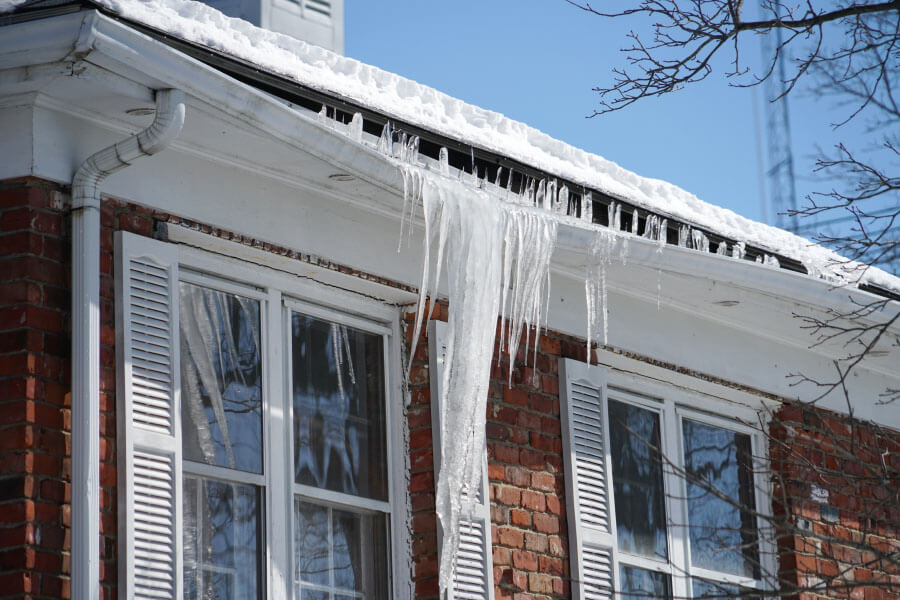
The biggest contributor to winter roof leaks is ice dams. An ice dam is a thick ridge of ice that forms at the eaves. The issue occurs when heat from the attic escapes through the roof and the bottom layer of snow melts. The melt water travels down the roof and then freezes when it reaches the colder temperature at the eaves and forms a dam.
The problem with ice dams is that when the snow melts again, the melted snow has nowhere to go but back under the shingles. The result is moisture in the attic, insulation, and walls that can damage wallboard or the overall home structure.
The long-term solution for ice dams may be to improve attic insulation or to install heaters at the roof edge before cold air arrives and the melting snow becomes a problem. In some cases, it helps to add a drip edge, which is a sheet of metal that fits along the perimeter of your roof. As runoff water hits the drip edge, it is directed away from the fascia and into your gutters.
Clogged gutters
Clogged gutters can be another cause of winter roof leaks. The net effect is quite similar to an ice dam, but the cause is a little easier to address. If you ran out of time to clean out your gutters at the end of the season, make sure you clean out that debris once the temperature gets warm enough to safely set up your ladder.
Poor seals around openings
In some cases, you’ll notice the roof is leaking due to poor seals around a bathroom vent, skylight, chimney, or another perforation in the roof. Seals sometimes leak because the flashing was installed improperly, but often the leak occurs because the seal has become cracked over time. Replacing the flashing should solve the issue. A roofing professional can advise whether the project can be accomplished in winter or whether a temporary fix is in order.
General decay
In some cases, snow provides a bit of a protective layer for loose shingles that might fly off during a heavy windstorm. However, if you know you have cracked, damaged, or missing shingles, you may also find yourself with a winter roof leak. Heavy snow may even place an additional load on the roof, damaging an already weak structure.
Winter storm damage
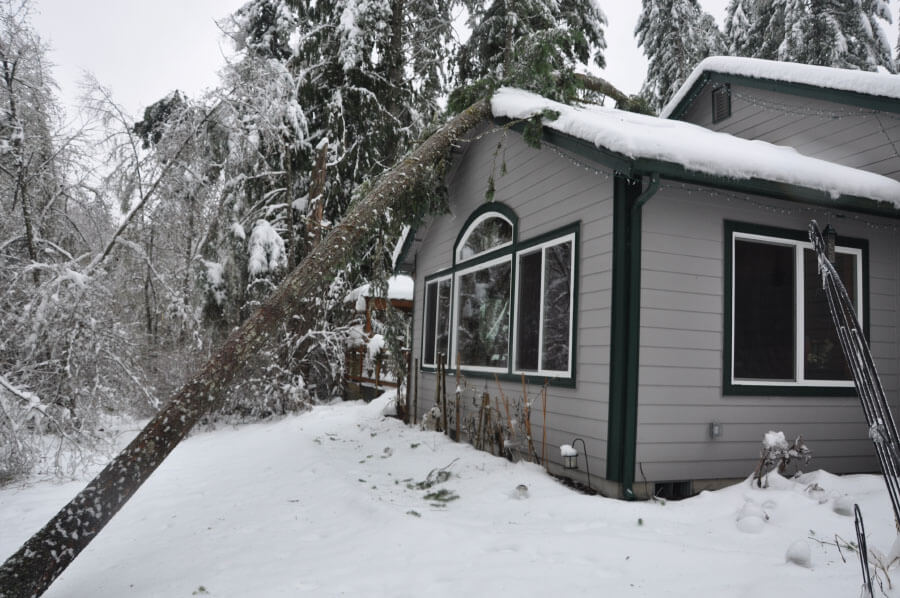
Occasionally, a winter storm with high winds, hail, or a falling tree branch may remove shingles and leave your roof deck exposed to water. Whenever a storm blows through, take a moment to make sure your roofing still appears to be secure.
Can roofs be fixed in the winter?
The good news is that many types of winter roof leaks can be addressed during cold temperatures, and probably should be. Roofing professionals are accustomed to difficult weather conditions. Although cold air may preclude a complete re-roofing job, for smaller emergency fixes, a professional roofer can use caulk, cover it up with plastic, or choose another alternative until the temperatures are higher.
Melvin Belk Roofing was recently called on by a homeowner whose roof sustained damage when a tree fell during a storm. These types of emergency roof repairs can be addressed right away to preserve the home.
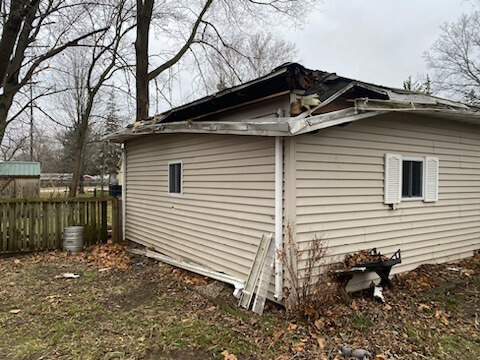
Our roofers were able to apply a temporary fix that will keep the house dry until temperatures are more favorable and a permanent fix can be scheduled.
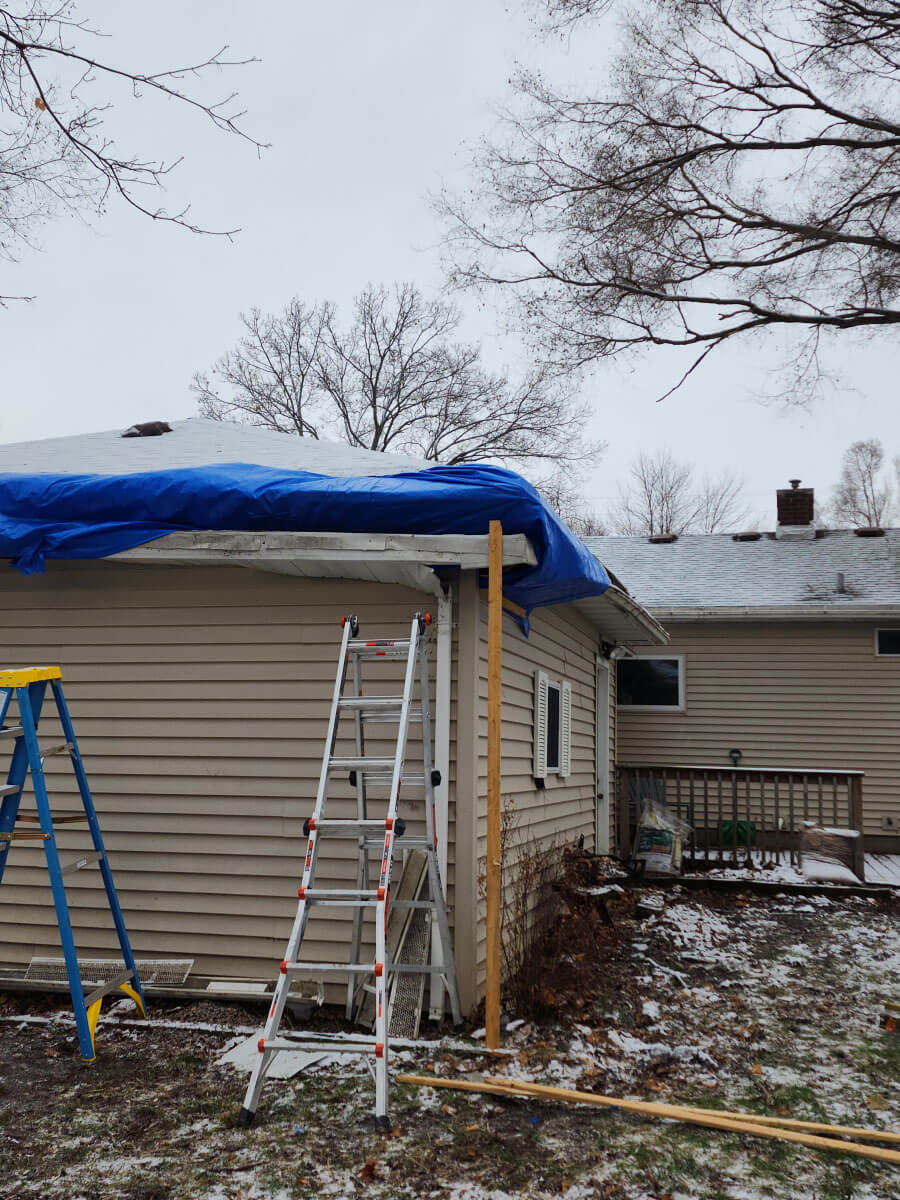
Complete roof replacement in winter
Complete winter roofing jobs are less common because roofing materials generally require higher temperatures to seal completely. Icy conditions can pose additional safety hazards. On top of that, tools operate less efficiently at low temperatures, and so do workers. All in all, winter roofing just takes longer. So while roof replacement in winter is certainly possible, it is generally better to schedule it during the warmer months.
What can you do if you notice winter roof leaks in your house? Try to identify the problem, and then bring in a professional for a roof inspection. Long-time roofers will know whether it’s possible to repair it or offer you a temporary solution, scheduling the repair for spring. Don’t let a leaking roof turn into a bigger problem. Contact Melvin Belk Roofing if you live in the Grand Rapids, Cedar Springs, Jenison, or surrounding areas of West Michigan. You can be confident that we’ll do the job right!
The post Winter Roof Leaks – Causes and Solutions appeared first on Melvin Belk Roofing.

